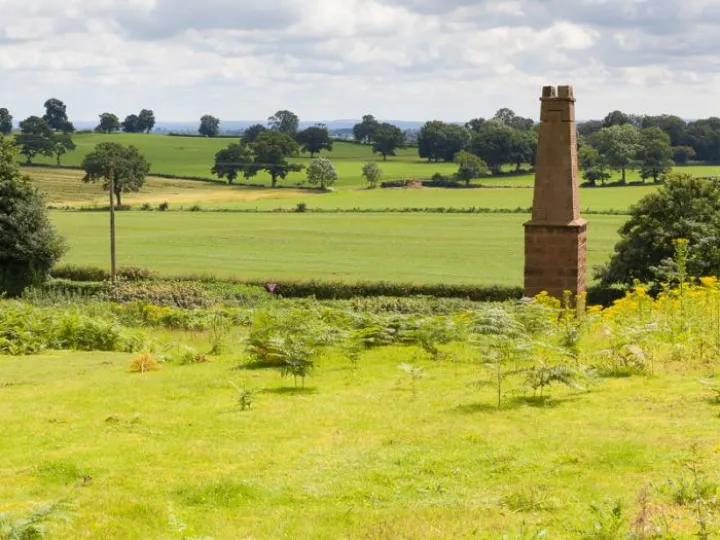Why Gallantry Bank? Myth or Mystery?
We have featured several articles on Gallantry Bank, right here on the Ridge. CLICK HERE
But have you wondered why the hill on the A534, at the point where the minor road from Bickerton Church meets the main road, is actually known as Gallantry Bank?
David Hayns has kindly provided the following copy ...
We know, from the day-to-day chronicle of the Civil Wars written by Thomas Malbon, an attorney from near Haslington, that on March 19th 1645, Prince Rupert, the dashing young nephew of King Charles I, hung twelve of his men at Bickerton 'on a crabtree at Widow Fisher's house'.
The Prince was on route from Beeston Castle where he had tried, unsuccessfully, to raise the siege laid by Parliamentarian troops around the Royalist garrison in the Castle, to Holt Castle, another Royalist stronghold.
The twelve men were hung for mutiny, a not uncommon occurrence during the conflict, when funds were short on both sides and when troops were frequently not paid.
It is said that it was this incident that caused the area to become known as 'Gallows Tree' Bank.
The hangings obviously did not solve the Prince's problem since the very next day he hanged a further twenty-four men at Holt Castle 'for that they were not so forward in performing of the command as he expected'. Brutal times indeed!
However, if one examines the accounts surviving for the Bickerton copper mines at the end of the 17th century, they refer to work being carried out not at Gallantry Bank but at 'Gallan Tree' Bank (the well-known chimney by the side of the A534 is the last visible evidence for these mines).
Many years ago, when I was searching through the files of Adams Weekly Courant, an early Chester newspaper, I came across the following advertisement in the issue dated November 28th 1769: 'Stolen or Stray'd, from Garland-Tree Bank in the Township of Bickerton, a Black Horse, with a long dock'd Tail, a few White Hairs under his Chin, full Aged, and upwards of Fourteen Hands high. If any Person can give Intelligence of him to James Gough, of Bickerton, or the Printer hereof, shall be handsomely rewarded.'
Records show that a Gough family did live in the house which still stands at the top of Gallantry Bank (where the Sandstone Trail crosses the A534).
Reference to a glossary of Cheshire dialect terms explains that in former times the evergreen yew was called the 'garland tree', due to the availability of its foliage for decorating churches at any season.
What does a visit to Gallantry Bank reveal? Right on the crown of the hill stands a magnificent yew tree, at least four hundred years old! So was it 'Gallows Tree' or 'Garland Tree'? We may never know.
Our thanks to David, who is a regular contributor to the Website.
A further reference to Gallantry Bank, originally called Gallows' Tree Bank, can be found in the Sandstone Trail publications. The body of a local man named Holford hung for stabbing a rival was gibbeted here in 1640.

Sandstone Ridge Trust
Registered Company No. 7673603
Registered Charity No. 1144470
info@sandstoneridge.org.uk


